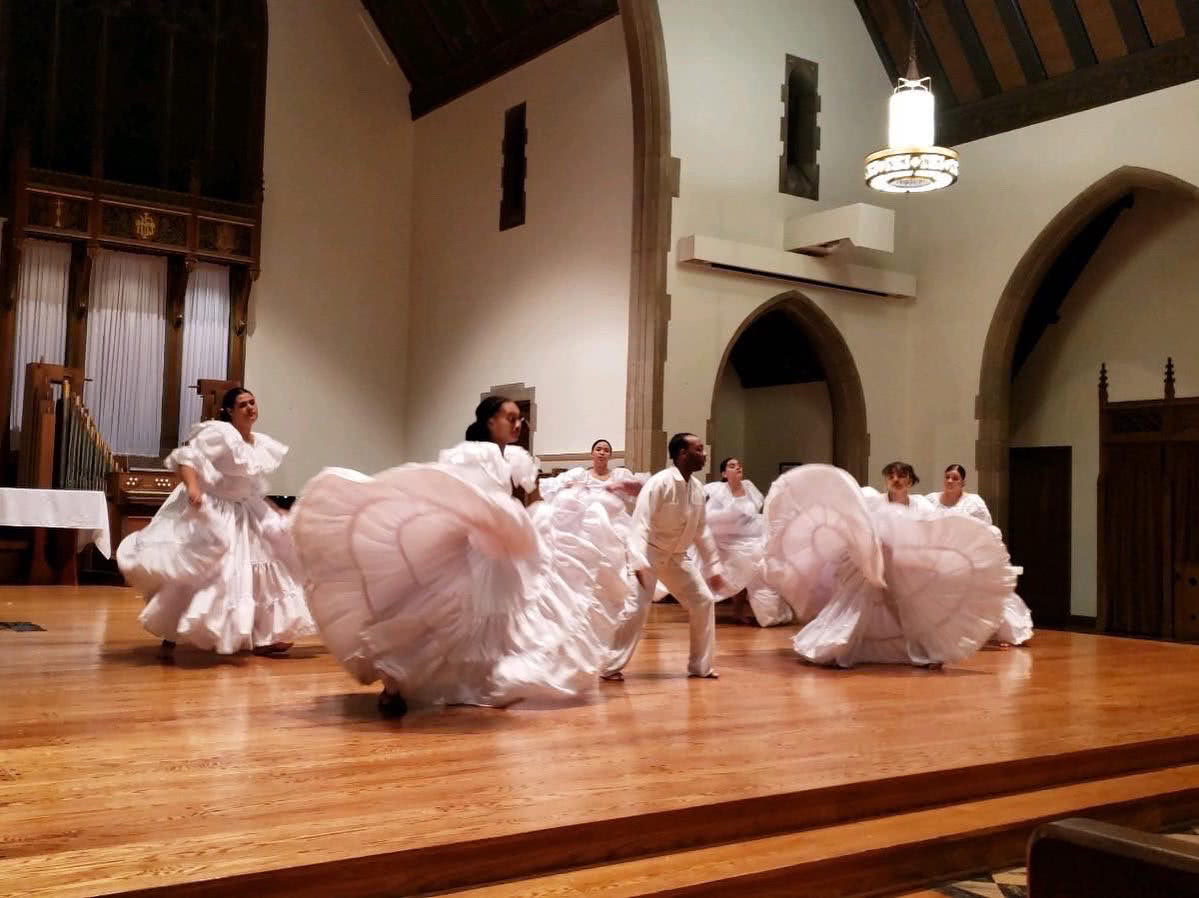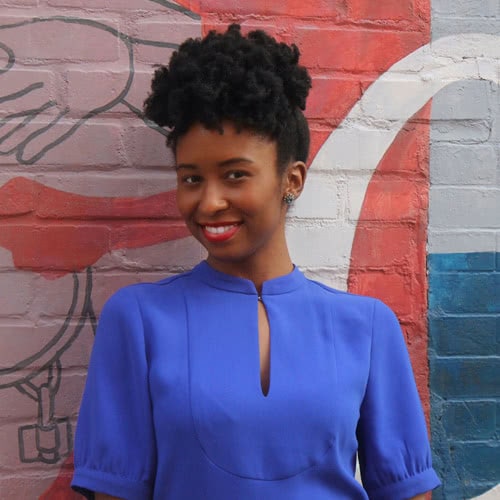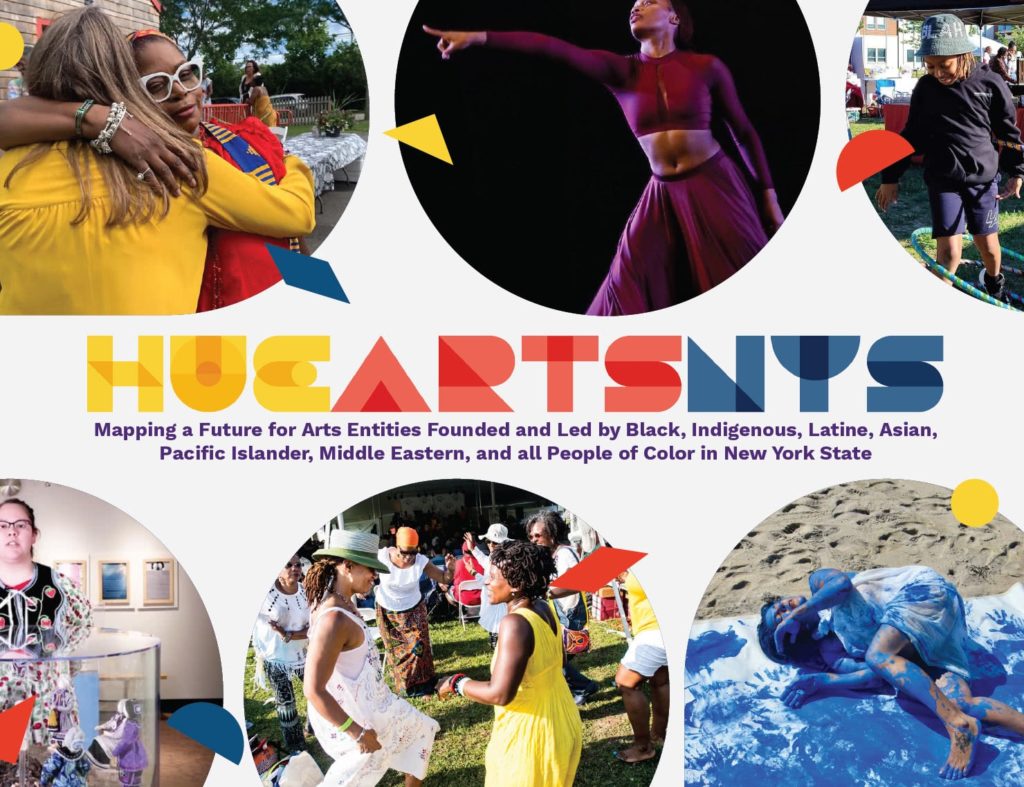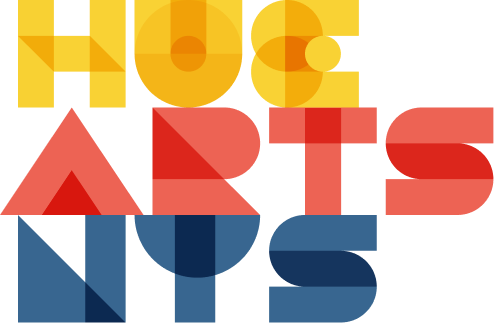
Brown Paper
HUEARTS New York
Mapping a Future for Arts Entities Founded and Led by Black, Indigenous, Latine, Asian, Pacific Islander, Middle Eastern, and All People of Color in New York State
OPENING LETTER

HueArts New York State (HueArts NYS) is truly an exciting opportunity to further champion the arts across my incredible home state. It expands upon Museum Hue’s efforts to identify and support art entities founded, led by, and serving Black, Indigenous, Latine, Asian, Pacific Islander, Middle Eastern, and all People of Color across New York.
The geography across New York varies widely, and differs greatly from New York City’s dense urban landscape where I was born and raised. Long Island, the Hudson Valley, the Finger Lakes, and other regions going as far as North Country arguably contain the most beautiful areas of New York; they are also home to unique conserved landscapes chiefly relating to Native American and African American history and heritage. Seneca Iroquois National Museum in Salamanca, which was recently renamed Onöhsagwë:de’ Cultural Center, preserves the legacy of Indigenous peoples from pre-colonial era to present day. The North Country Underground Railroad Historical Association in Ausable Chasm preserves the legacy of the Black experience, the fight for freedom and independence. They are two of several arts and cultural organizations that uplift cultural contributions, artistic practices, and historical presence particular to New York State.
There are also organizations like the Borinquen Dance Theater in Rochester and Teatro Yerbabruja in Bay Shore which showcase the Puerto Rican and the larger Latine community arts and culture. These arts entities and their communities are intrinsic to the very fabric of New York. I am thrilled that leaders of all these venerable institutions mentioned along with others are a part of the advisory committee for HueArts NYS.
Interestingly, growing up in Brooklyn, I hardly ventured to parts of the state outside of the five boroughs. It’s quite a strange dynamic. Downstate, we are disconnected from the rest of the state in many ways, not just by physical distance. It takes about seven hours by car to get to areas like Buffalo from Brooklyn, while one can get to parts of Long Island and Westchester in just an hour. Mostly everywhere outside of the boroughs are advertised as “getaways” from city life–especially places like Niagara Falls, the Catskills, and other sightseeing and leisure locations. However, there is also a tremendous amount of history in these areas as highlighted above.
Still, I visited those parts of the state maybe once or twice as a kid. If I did leave the city for other parts of New York, I mostly went to Long Island to visit family members. While there, I rarely visited any museums, theaters, or historic sites even though there are arts and cultural entities in both Suffolk and Nassau counties just a few miles from where my relatives reside. I had no notion that these spaces existed outside of the city; it was so ingrained in me that the New York City arts scene is all that mattered. I know that isn’t true, but it was a perspective reinforced through my primary and secondary schooling in the NYC Department of Education, as well as my time studying Fine Arts and Art History at Brooklyn College, and even from the media and artwork showcased throughout New York City’s train and bus system.
I mostly learned about the arts spaces mentioned earlier in recent years as I traversed the state to visit Black, Indigenous, Latine, Asian, Middle Eastern, and all People of Color arts entities. The expansion of HueArts from New York City to New York State to develop racial equity in the arts has provided me with a clearer lens to see the landscape and experience of Black, Indigenous, and all People of Color. So although many of these areas are exquisite, the racial disparities across New York State feel much more profound given the abundant natural beauty and resources found throughout its landscape.
It is my intention that HueArts NYS also helps bring greater awareness of these arts entities’ incredible work and encourages opportunities and partnerships to bring them together. Arts entities like Ma’s House, located on the ancestral lands of the Shinnecock People within what is now Long Island, have been intentional in bringing together Black, Indigenous, Latine, Asian and all People of Color to showcase their artistic practices while also preserving the legacy of their people. Not too far away, Southampton African American Museum, which was originally a Black-owned barbershop, has been transformed into a growing cultural institution located in a historically African American neighborhood that has witnessed ongoing gentrification. Other efforts across the state also bring different communities together in partnership, collaboration, and resource sharing. For example, Frontline Arts Buffalo is a thriving partnership of four organizations: African American Cultural Center, El Museo, Locust Street Art, and Ujima Company.1
Expanding our focus from New York City’s five boroughs to New York State’s other urban centers, suburbia, and more rural communities, also allows us to continue to unearth how we define the arts. These arts entities exist as mediums for social justice, and engines of economic vitality for main streets and downtowns. Their existence and continued practice are forms of resistance.
Connecting people back to the land and allowing them to spend time appreciating it is also crucial to our future. Can we envision and hold the study and appreciation of plants and cultivation of the land as an artistic practice?
HueArts NYS provides a great opportunity to think about how our arts entities address the whole health of their communities not just through programming but their unwavering support and care.
Many Native American and African American farmers’ techniques in tilling the land in preparation to grow crops are creative skills passed down from generations as well as the preservation of their agriculture taught to them by their elders and ancestors. Preserving foodways is another practice that needs to be seen as an art form. We know that arts and culture contribute to a community’s health and well-being but how can we truly change the trajectory of someone’s life through community-driven care and connection to the land?
Herban Cura, an organization that explores the history and potential of plants and people, is doing just that – providing opportunities for People of Color to learn the diversity and intricacies of New York’s geography. They build community through programming that takes people from the five boroughs to parts of the state that many would never explore on their own. Similarly, Hood Hikers creates a safe space in nature for Black and Brown folks to enjoy the outdoors. They curate hikes and other outdoor activities and provide transportation to get folks “out the hood into the woods.” It is a time to reconnect with one’s ancestors, tune into ourselves on the trail and out in nature.
HueArts NYS provides a great opportunity to think about how our arts entities address the whole health of their communities not just through programming but their unwavering support and care. We truly aim to address the barriers that separate us from connecting all of New York State’s art entities of color.
For this to happen, we must continue to make a case for greater agency, power, ownership, and resources for Black, Indigenous, Latine, Asian, and all People of Color’s artistic practices in all forms across New York State.
As we have with HueArts NYC, we will explore the recommendations and mine data compiled to further uplift and champion arts entities across New York State.
Stephanie Johnson-Cunningham
Museum Hue
Top photo: Boriquen Dance Theater, Inc.

Read our stories, findings and recommendations
- Three of the four partners are founded and led by people of color, with the exception of Locust Street Art.
